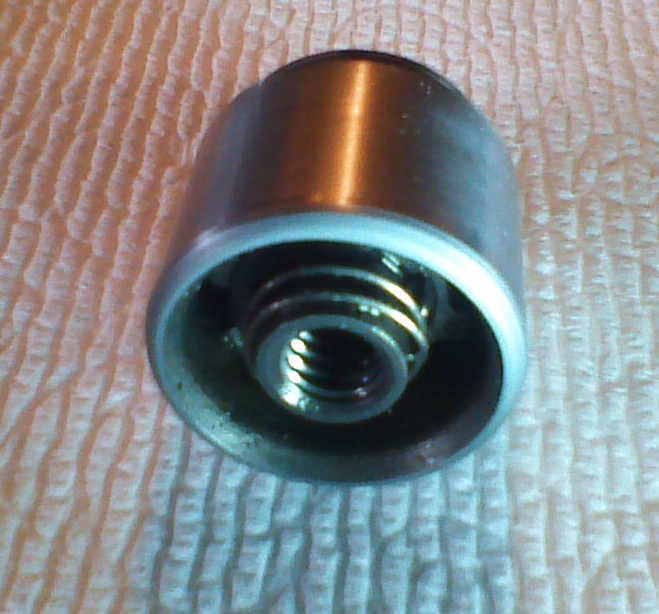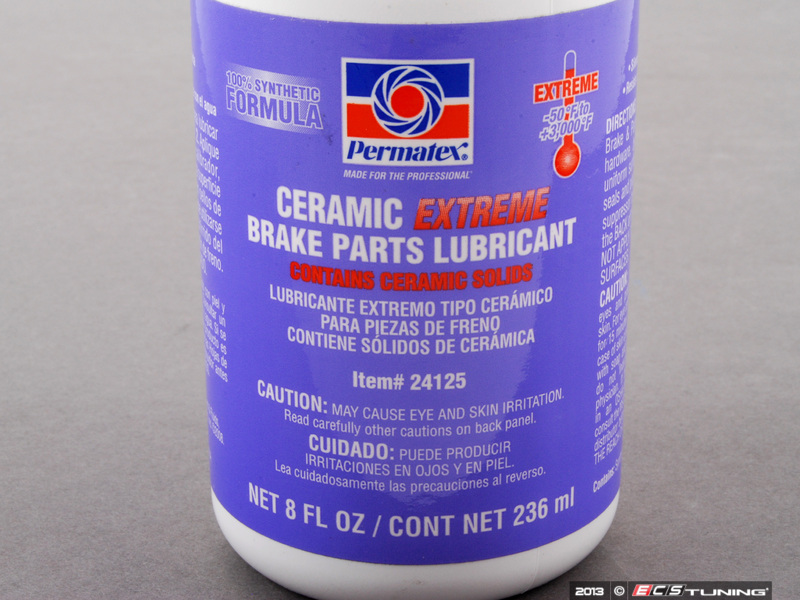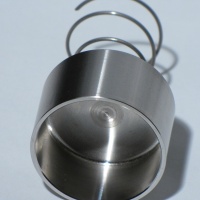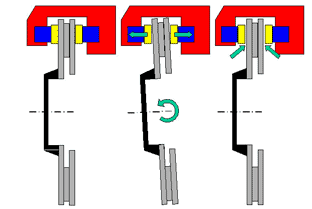|
|

|
Porsche, and the Porsche crest are registered trademarks of Dr. Ing. h.c. F. Porsche AG.
This site is not affiliated with Porsche in any way. Its only purpose is to provide an online forum for car enthusiasts. All other trademarks are property of their respective owners. |
|
|
  |
| ljubodraz |
 Apr 28 2017, 02:26 PM Apr 28 2017, 02:26 PM
Post
#1
|
|
Member   Group: Members Posts: 64 Joined: 4-May 14 From: Chicagoland Member No.: 17,312 Region Association: Upper MidWest |
Firstly, many thanks to Eric Shea and the rest of you who have written threads that are helping me rebuild my rear brake calipers on my own.
I've got a few questions so far as I wait for parts: 1. What is the purpose of the mechanism within the brake pistons? Does it allow the piston to extend and retract beyond the limits of the adjustment bolt that threads into it? 2. Is there anything I should do to test that it's working properly?  3. I see that Eric Shea recommends and uses Permatex Ceramic Extreme Brake Parts Lubricant for assembly purposes. I've also seen other threads saying to only use some hard to find $$$ ATE paste. Aside from lubricating the parking brake mechanism that pushes the internal bolt, can't I (should I) simply use brake fluid to lube the pistons and seals during assembly? Unlike Eric's calipers, mine won't be sitting around too long before being installed preventing the brake fluid from absorbing water.  |
| ConeDodger |
 Apr 28 2017, 10:14 PM Apr 28 2017, 10:14 PM
Post
#2
|
|
Apex killer!                Group: Members Posts: 23,553 Joined: 31-December 04 From: Tahoe Area Member No.: 3,380 Region Association: Northern California 
|
Eric wet his pants or he'd have commented by now. What? Eventually adults have accidents too... his only comment? "Don't ask!" (IMG:style_emoticons/default/blink.gif)
I think that might be the internal part of the setting the gap thing for the rear calipers. |
| ljubodraz |
 Apr 28 2017, 10:20 PM Apr 28 2017, 10:20 PM
Post
#3
|
|
Member   Group: Members Posts: 64 Joined: 4-May 14 From: Chicagoland Member No.: 17,312 Region Association: Upper MidWest |
Thanks ConeDodger. (IMG:style_emoticons/default/biggrin.gif) I already know it has to do with venting clearance adjustment but there's more to it....
|
| ljubodraz |
 Apr 30 2017, 05:54 AM Apr 30 2017, 05:54 AM
Post
#4
|
|
Member   Group: Members Posts: 64 Joined: 4-May 14 From: Chicagoland Member No.: 17,312 Region Association: Upper MidWest |
|
| ljubodraz |
 May 19 2017, 09:17 PM May 19 2017, 09:17 PM
Post
#5
|
|
Member   Group: Members Posts: 64 Joined: 4-May 14 From: Chicagoland Member No.: 17,312 Region Association: Upper MidWest |
Okay. I'm following up on my thread here from a few weeks ago....
I'd like to share something I think I learned about our rear calipers that perhaps not all of us know. From what I read in the factory service manual, the rear caliper venting clearance is supposed the be self adjusting with pad wear. It appears, however, many of ours don't do this well anymore due to age and maybe stress imposed from rebuilds. Many, including our in-house expert Eric Shea, recommend checking the clearance once or twice a year. What troubled me is that I've never read anyone here clearly stating they're supposed to auto-adjust. This starts to answer the original question I had about the mechanism in the pistons of the rear calipers. Having removed the mechanisms for cleaning, it was clear to me that one function is to allow the piston to extend a few millimeters beyond the position of the threaded adjuster bolt when brakes are applied. In my later model mechanisms, the extension is made possible by compressing two spring (wavy)washers towards the front of the pistons. What troubled me was the purpose of the wound up spring visible at the back of the mechanism. (See picture in my original post above.) Apparently, this spring helps the mechanism unthread the piston from the adjuster bolt just a tiny bit each time the piston is forced to gradually extend further with pad wear. My original question was whether there is anything we can do during a rebuild to ensure the mechanism is working properly. This I don't yet know. It would take a bit of force to extend the mechanism to test the winding action. I don't want to break it. Anyhow, this helped explain contradictions I've read here regarding the matter. In particular, there was once a post by our late Cap'n Krusty indicating in all his years of experience he has never had to adjust the rear venting clearance or parking brake between pad replacements. This was going against everything Eric Shea was indicating and it bothered me. I now think maybe the Cap'n spent more time with this when our teeners weren't as old and most mechanisms still worked. Eric is perhaps more familiar with calipers that weren't maintained by dealer mechanics. Sorry for the long post but this is interesting to me. Please let me know if I'm wrong about this stuff as I respect the knowledge available here on the World. |
| Jeff Hail |
 May 21 2017, 12:32 AM May 21 2017, 12:32 AM
Post
#6
|
|
Senior Member    Group: Members Posts: 1,141 Joined: 3-May 07 From: LA/ CA Member No.: 7,712 |
Knock Back Mechanism
Too little clearance and the pads drag. To much clearance and you better have a whole lot of talent when the pedal goes low after repeated braking. Rotors have run out, knuckles, spindles, split calipers also deflect under load. Without the Knock Back Mechanism you would get a nasty pulse in the pedal and other weird stuff. Worse is having a pulse which causes a low pedal and loss of modulation. Minor corrections are needed for axial misalignment of the rotor to pad face. Piston seals can be pretty tight. Push the pedal and the pads will retract a tiny bit, if they don't again pads drag. Drag causes heat and premature wear which in brakes excessive heat is the enemy. With the parking brake its an adjustment within a passive adjustment mechanism to set the specified clearance limit (vent). 914 KBM's are pretty dated by todays standards. Now even Brembo just sticks a coil spring in the bore behind the piston. Other designs use a simple spreader type of spring. Highly misunderstood mechanism and they do much more than most folks think. |
| rgalla9146 |
 May 21 2017, 05:55 AM May 21 2017, 05:55 AM
Post
#7
|
|
Advanced Member     Group: Members Posts: 4,544 Joined: 23-November 05 From: Paramus NJ Member No.: 5,176 Region Association: None 
|
Knock Back Mechanism Too little clearance and the pads drag. To much clearance and you better have a whole lot of talent when the pedal goes low after repeated braking. Rotors have run out, knuckles, spindles, split calipers also deflect under load. Without the Knock Back Mechanism you would get a nasty pulse in the pedal and other weird stuff. Worse is having a pulse which causes a low pedal and loss of modulation. Minor corrections are needed for axial misalignment of the rotor to pad face. Piston seals can be pretty tight. Push the pedal and the pads will retract a tiny bit, if they don't again pads drag. Drag causes heat and premature wear which in brakes excessive heat is the enemy. With the parking brake its an adjustment within a passive adjustment mechanism to set the specified clearance limit (vent). 914 KBM's are pretty dated by todays standards. Now even Brembo just sticks a coil spring in the bore behind the piston. Other designs use a simple spreader type of spring. Highly misunderstood mechanism and they do much more than most folks think. Thank you for the explanation of what it does. How does it do it ? |
| Jeff Hail |
 May 21 2017, 10:25 AM May 21 2017, 10:25 AM
Post
#8
|
|
Senior Member    Group: Members Posts: 1,141 Joined: 3-May 07 From: LA/ CA Member No.: 7,712 |
Its rather simple actually.
Deflection in the rotor which causes the pads and piston to get retracted ("Knocked back") need to be returned to position. It spring acts as a dampener and helps return the piston to position. The easiest visual aid would be this. Attached image(s)  
|
| ljubodraz |
 May 22 2017, 11:07 AM May 22 2017, 11:07 AM
Post
#9
|
|
Member   Group: Members Posts: 64 Joined: 4-May 14 From: Chicagoland Member No.: 17,312 Region Association: Upper MidWest |
Jeff, I greatly appreciate your response. The thing is, "knock-back" is only one function of the mechanism in the rear pistons. One of the next things I am contending is that the design is intended to auto adjust venting clearance with pad wear. All I have ever read here is that we must regularly check the clearance and manually adjust because they don't auto adjust like the fronts.
Please read post #5 (IMG:style_emoticons/default/headbang.gif) The knock-back is achieved by two wavy washers in the mechanism that get compressed when you apply the brakes. When you release the brakes the washers expand pushing the pistons back. My theory for auto adjustment of how venting clearance is supposed to work is explained in my post #5. I'm trying to get the collective wisdom here to either confirm or deny whether they are supposed to auto adjust venting clearance. |
| Jeff Hail |
 May 22 2017, 08:00 PM May 22 2017, 08:00 PM
Post
#10
|
|
Senior Member    Group: Members Posts: 1,141 Joined: 3-May 07 From: LA/ CA Member No.: 7,712 |
All calipers in good operating condition self adjust for wear...sort of. Pistons just keep extending. Single piston, dual and mega-binders, fronts, rears. As the pad wears the piston moves outward in its bore. Pad sits up against the rotor.
Parking brake mechanism: Parking brakes incorporated into the caliper operate a little differently. They use a lever, cam, worm gear (different designs) etc to mechanically squeeze one piston without hydraulic assistance.(one side only) Both pistons have a manual adjustment. The threaded adjuster has limits to its adjustment. As the pads wear or if both sides are not adjusted properly the cups can run off the threaded adjuster in an extreme case. Visualize one piston extended 3/4 of the way out of its bore and the opposing piston only 1/4 way extended? Pads will wear with a cant and the friction material end up a wedge instead of a puck, rotors cut by the friction material angle of wear. Vent: Setting clearance is to achieve a little slack between the two sides of the caliper. From a safety perspective it helps the piston so it does not seize in the bore since it keeps moving. In theory the aim is to have the rotor perfectly centered between both pads but in real life with the addition of the mechanical parking brake it gets help. The rotor is "nudged" lightly against the outside pad. The answer to your question is yes they do self adjust... to a point and then the answer goes to sometimes and then no. This depends on how they are initially set up, condition and kept in adjustment. On the knock back side you are back wards. The rotor under deflection pushes the piston back in its bore. The piston may not return quick enough so the little KB helpers (springs/washers) provide a dampener for the pad "keeping the pedal". Floating calipers do not tend to have this problem because the caliper follows the rotor. Fixed caliper bodies its the pistons that float back in forth and this is where problems begin. At the end of the day the knock back mechanism is passive. The vent clearance is not constant throughout the service life of the pads so adjustments are needed at prescribed intervals. ATE designed a good economical caliper with a tiny amount of drag built into pad to rotor contact and Porsche took it back by the vent clearance. The published clearance changed over time which means something for good reason moved Porsches cheese. |
| ljubodraz |
 May 22 2017, 09:31 PM May 22 2017, 09:31 PM
Post
#11
|
|
Member   Group: Members Posts: 64 Joined: 4-May 14 From: Chicagoland Member No.: 17,312 Region Association: Upper MidWest |
Jeff, again I sincerely thank you for taking the time to respond. Having finished rebuilding the calipers I think I understand pretty well how they work now. It's possible I'm backwards on my understanding of kick back but I'm not convinced of it just yet.
I'm starting to understand things relating to rotor deflection and slop in joints but it seems as though you are saying the system relies on warped rotors and slop to push the pistons back. Although that may very well happen in real life, I doubt it is the design intent. I believe the basic design intent for knock back is through the wavy washers of the piston mechanism I've seen and described (late models). The other incidental knock back is the piston seals returning from deformation, as you described. Anyhow, I'm fine with the issue of knock back. The issue of whether the rear calipers were designed to auto adjust venting clearance is what I was looking for feedback on. It appears you agree that auto adjustment was the design/engineering intent of the rear calipers. Going back to the issue of rotor deflection, I question or disagree with something else I've read from others about it. Relating to the parking brake, many say that the parking brake extends the piston on the internal side pushing the rotor against the outer pad locking it tight (kind of like the diagram in your previous post). In theory, it makes sense until I started thinking about how brake pressure is reduced when the internal piston is mechanically extended for the parking brake. In theory then, the opposite piston can retract the same amount the other piston is extended. Because of this I don't think the rotor is really clamped down from both sides. I'm getting carried away from my intended topic and I apologize but I get excited when I think I'm learning new things. Thanks again for you thorough responses Jeff. |
| Eric_Shea |
 May 23 2017, 04:53 PM May 23 2017, 04:53 PM
Post
#12
|
|
PMB Performance                Group: Admin Posts: 19,274 Joined: 3-September 03 From: Salt Lake City, UT Member No.: 1,110 Region Association: Rocky Mountains  |
Sorry, I didn't see this thread.
That mechanism in the first post is for the internal adjustment of the rear calipers. They need to be adjusted so the handbrake will work properly and to help keep a high pedal. The mechanism serves two functions: 1. It has a right hand thread that allows the pistons to be adjusted in and out for venting clearance. 2. It is spring loaded so it allows the piston to operate normally via hydraulics while still being attached to the adjuster shaft. A "Knockback" mechanism is not incorporated in the rear calipers which is why it's a good idea to check the venting clearance and adjust manually every year. A "knockback" is the mechanism in the "Front" caliper pistons that rides on a pin. These actually work in reverse to what had been described herein as having the pads "knocked back" in. The ATE knockback mechanism actually knocks the piston "outward" to accommodate for the wear of the pads. Think of the old child's play toy with the woodpecker on a stick. Flick the tail and it shimmies down the pole. These work in reverse. There is a brass sleeve which cocks and locks on the pin inside the caliper. A small internal spring then pushes the piston outward toward the pad to help keep a high pedal. The runout on the rotor helps set the clearance and the internal bore seal also helps pull the piston back in. The knockback mechanism, knocks the piston back "out" toward the rotor again to establish a firmer pedal with less travel. Later (1976ish) ATE began using cup style pistons in almost all of their calipers and the knockback pin and mechanism was relegated to the history books. These later cars had booster circuits (power brakes) which kept a residual 2-3 PSI on the system at all times effectively knocking the pistons back out toward the pad/rotor. Hope that helps. |
| ljubodraz |
 May 23 2017, 07:00 PM May 23 2017, 07:00 PM
Post
#13
|
|
Member   Group: Members Posts: 64 Joined: 4-May 14 From: Chicagoland Member No.: 17,312 Region Association: Upper MidWest |
Eric,
Thank you for finally chiming in on this. (IMG:style_emoticons/default/smile.gif) Would you please confirm my claim in post #5 that the rear calipers were designed with the intention that they auto adjust via the internal piston mechanism? |
| Jeff Hail |
 May 24 2017, 09:00 AM May 24 2017, 09:00 AM
Post
#14
|
|
Senior Member    Group: Members Posts: 1,141 Joined: 3-May 07 From: LA/ CA Member No.: 7,712 |
I'm the first person to admit if I erred. I always appreciate Eric for his knowledge and contributions. No one is perfect. Not Eric nor I. Its always great to learn something new.
Lets let the engineers explain: 1) Self adjusting brakes 2) What is knock back 3) What is a knock back mechanism. 4) That spring loaded cup on the inside the main piston. Provided by Teves and Airheart. The fathers of our calipers. Attached File(s)  US3200911.pdf ( 455.16k )
Number of downloads: 131
US3200911.pdf ( 455.16k )
Number of downloads: 131 US3322243.pdf ( 578.29k )
Number of downloads: 100
US3322243.pdf ( 578.29k )
Number of downloads: 100 |
| Eric_Shea |
 May 24 2017, 09:53 AM May 24 2017, 09:53 AM
Post
#15
|
|
PMB Performance                Group: Admin Posts: 19,274 Joined: 3-September 03 From: Salt Lake City, UT Member No.: 1,110 Region Association: Rocky Mountains  |
I got my info from conversations with a very helpful ATE engineer in Frankfurt who had to dig through their archives to even find what I was talking about. (IMG:style_emoticons/default/biggrin.gif)
The factory manual has a very good explanation for that mechanism as well. The mechanisms are spring loaded and are supposed to rotate on the adjuster shaft and adjust. I've always adhere to checking once per year. |
| ljubodraz |
 May 24 2017, 03:16 PM May 24 2017, 03:16 PM
Post
#16
|
|
Member   Group: Members Posts: 64 Joined: 4-May 14 From: Chicagoland Member No.: 17,312 Region Association: Upper MidWest |
Jeff,
Thanks again. I'll study the PDF documents you attached when I get some more time. I'll admit that my understanding of knock back might have been backwards. I was referring to the caliper's ability to slightly pull the pistons away from contact after pedal release. You were referring, I think, to slop in the system that keeps pushing the pads back more than we want and how the calipers try to overcome this. No error on your part.... we just think of it from different angles. Eric, Thanks to you as well. Thanks for confirming that the rears are "supposed" to auto adjust venting clearance with pad & rotor wear. I'm just surprised that I've never read such a statement here before. That doesn't mean that I ever questioned your advice to check the venting clearance regularly. Other than cleaning up the rear piston mechanisms during a rebuild, have you ever figured out a way to test they're working properly before reassembly? (other than checking for broken springs) To you both..... (IMG:style_emoticons/default/beerchug.gif) |
| Brain2000 |
 Sep 27 2021, 10:49 AM Sep 27 2021, 10:49 AM
Post
#17
|
|
Newbie  Group: Members Posts: 1 Joined: 27-September 21 From: Ohio Member No.: 25,938 Region Association: North East States |
Eric, Thank you for finally chiming in on this. (IMG:style_emoticons/default/smile.gif) Would you please confirm my claim in post #5 that the rear calipers were designed with the intention that they auto adjust via the internal piston mechanism? It is a few years later, but I wanted to chime in on an experience I had today with rear caliper gap adjustment. I was replacing both rear calipers on a 2014 Kia Soul and afterwards it had a low pedal. The car stopped fine, but not until it was halfway down. After a couple days of gnashing teeth, I found a procedure in the Kia Soul service manual for adjusting the "Rear Brake Caliper Gap", as they call it. 1) loosen the parking brake cable (it's under the center console's back panel, easiest to access while lying down on the back seat) 2) have a 2nd person pump the brake pedal to push all the pads up against the rotors, and then hold pressure on the brake pedal 3) while the 2nd person is holding tension on the brake pedal, tighten the parking brake cable to the proper tension There's something about having the pads sitting on the rotors when tightening up the parking brake that also sets the gap. After I did this, the brake pedal activated a bit higher, and the parking brake worked much better. Maybe this is unique to Kia's, but I wanted to mention it because I couldn't find anything on the internet about this (except the Kia Service Manual). Might be worth a video. |
  |
1 User(s) are reading this topic (1 Guests and 0 Anonymous Users)
0 Members:

|
Lo-Fi Version | Time is now: 20th April 2024 - 02:57 AM |
Invision Power Board
v9.1.4 © 2024 IPS, Inc.








